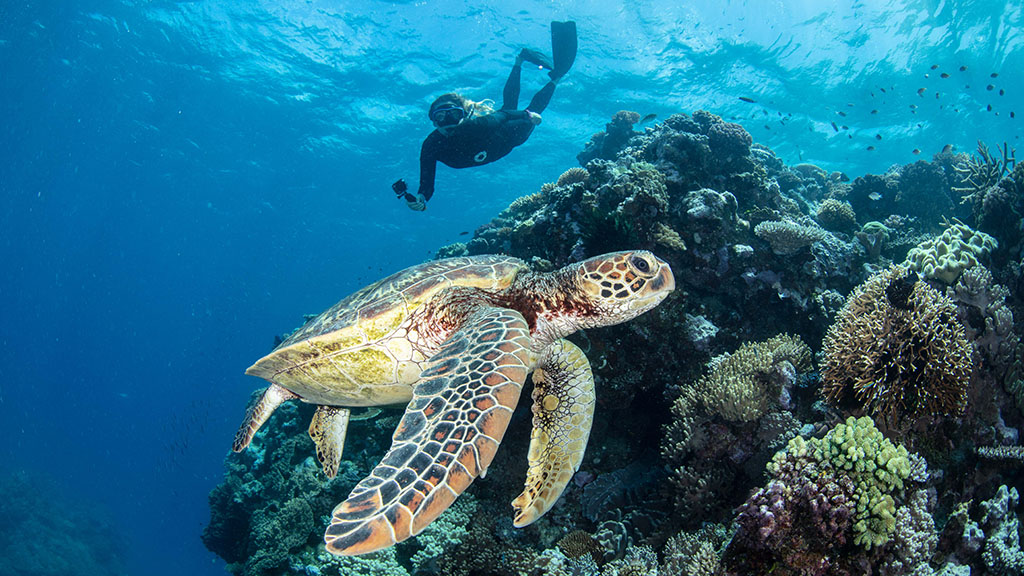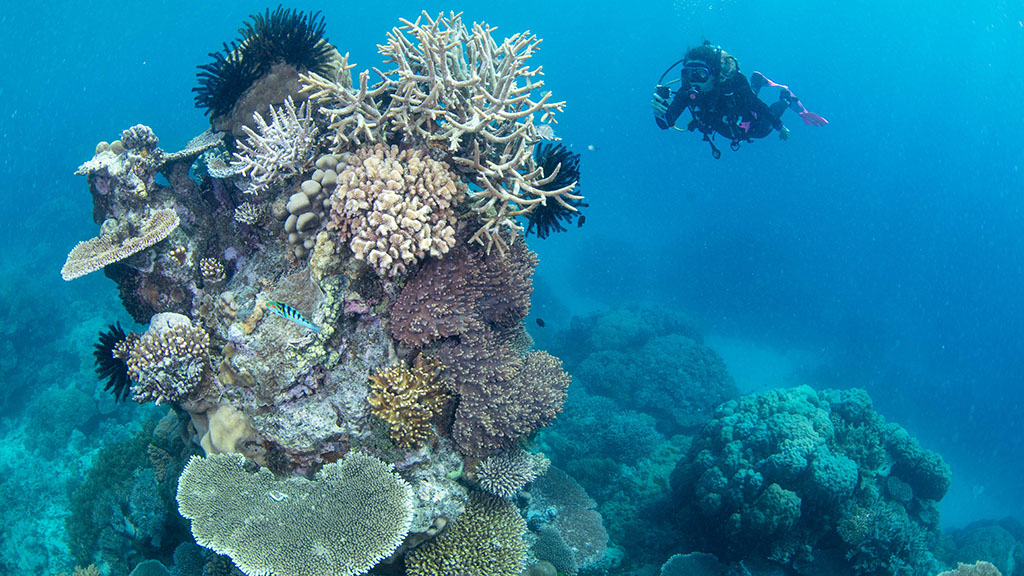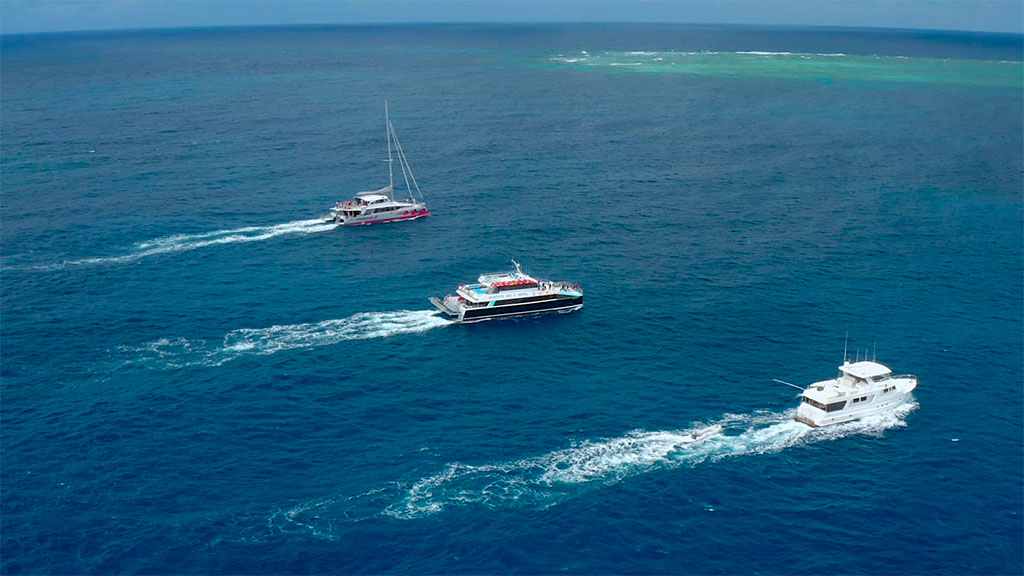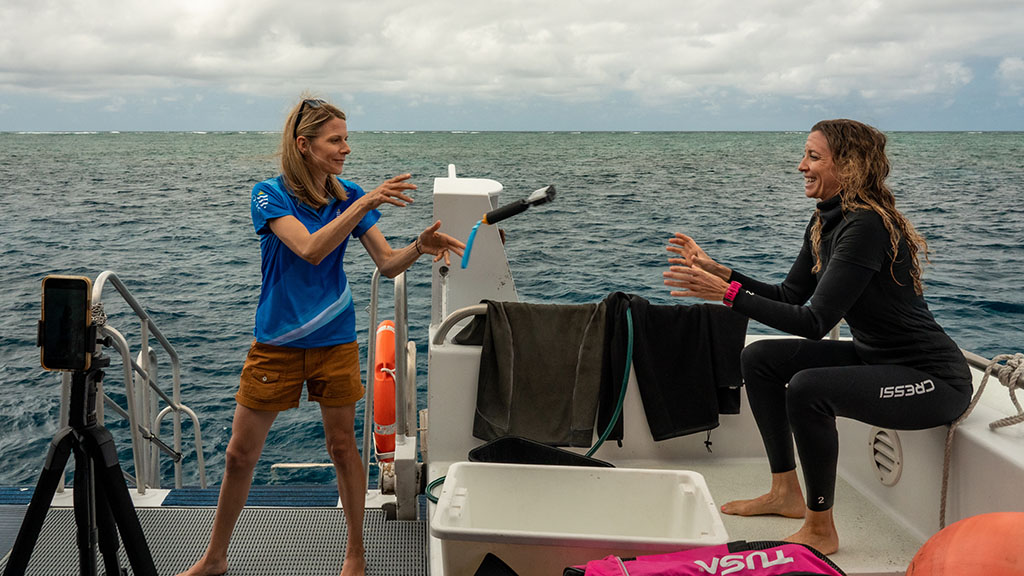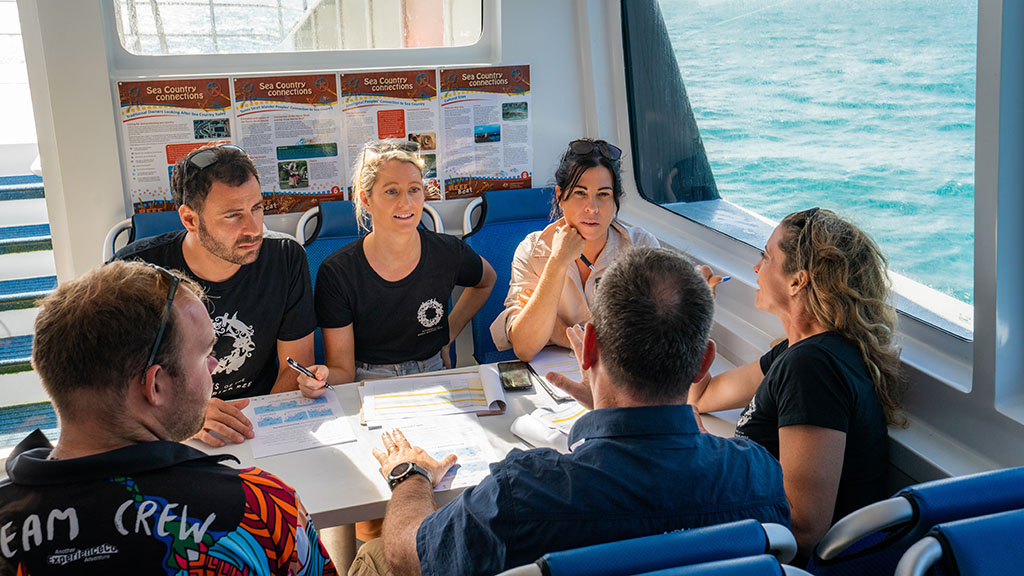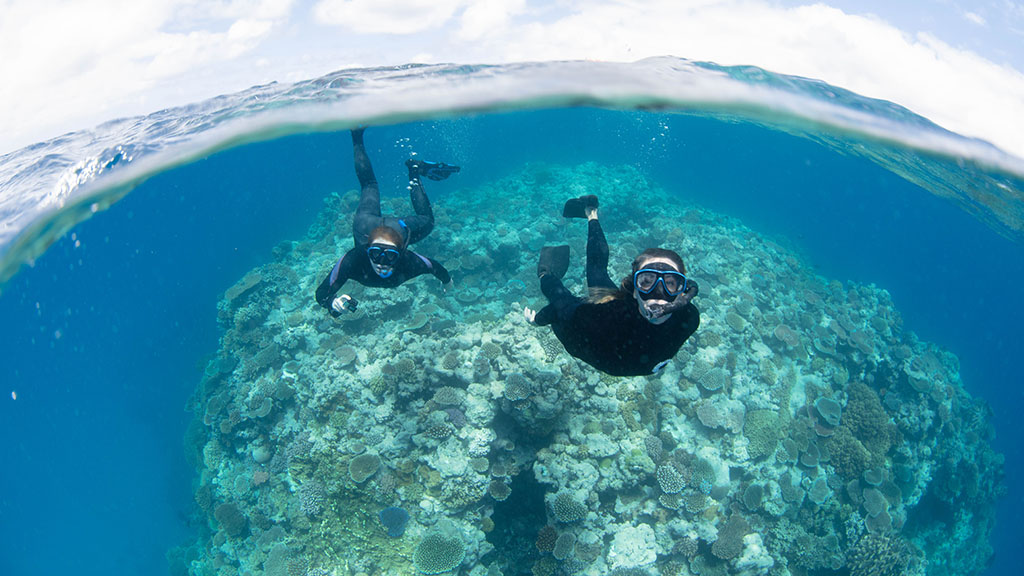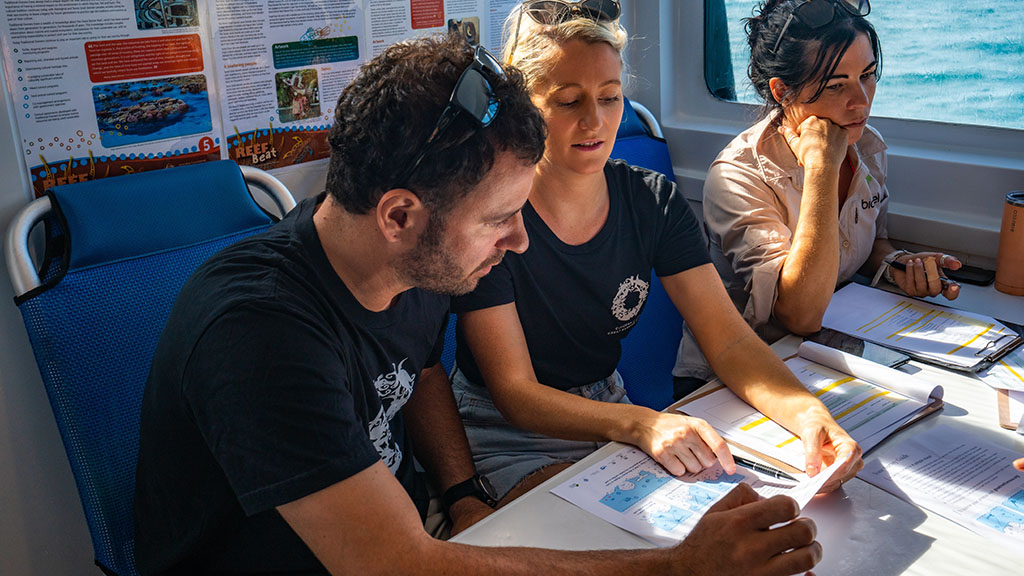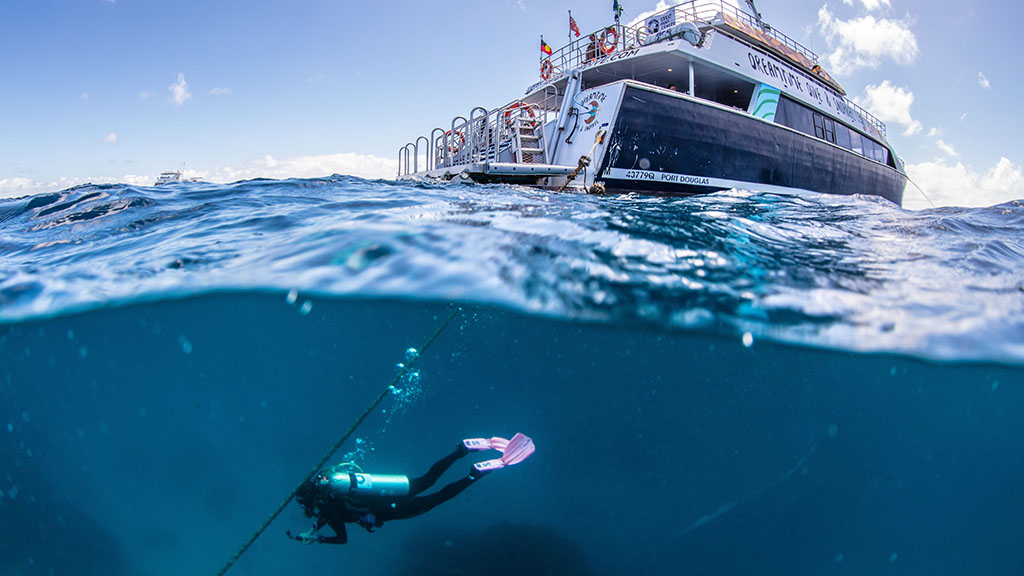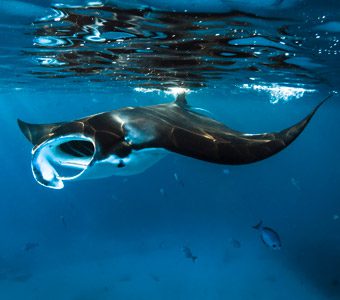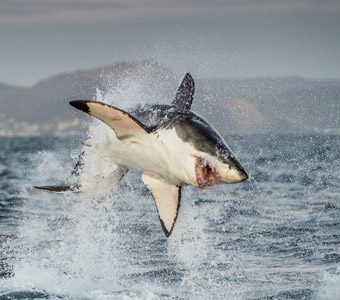The Great Reef Census launched across the Great Barrier Reef this month, with a flotilla of boats deployed across its 2,300km length, from Lady Elliot Island in the south to the remote Far North. And here’s how you can take part.
Incorporating the Great Barrier Reef Marine Park Authority’s long-term Eye on the Reef program to collect data, the Census is a world-first citizen science project designed to capture large-scale reconnaissance data from across the Great Barrier Reef, helping to support reef research and management. Comprising over 3,000 individual reefs, capturing reconnaissance data in the form of images from across the Great Barrier Reef is an immense task that requires new and innovative ways of working together.
Following a successful pilot program in 2019, this year sees a major scale-up to 100 priority reefs from the remote far northern reefs, to the Swains and Lady Elliot Island, with the intention to build on this year’s learnings to launch an even bigger Great Reef Census in 2021. A diverse range of vessels from tourism and dive boats, to research ships and super yachts are working collectively across the Reef to achieve this goal.
In November, citizen scientists from around the world will be invited to participate online by helping to analyze the reef images captured.
The Great Reef Census is a Citizens of the Great Barrier Reef project, delivered in partnership with the University of Queensland, the Great Barrier Reef Marine Park Authority and the Australian Institute of Marine Science with support from James Cook University, the University of Technology Sydney and the University of Tasmania. The project is funded by the partnership between the Australian Government’s Reef Trust and the Great Barrier Reef Foundation, the Prior Family Foundation and the Reef & Rainforest Research Centre.
Given the immense size of the Great Barrier Reef, the impacts of climate change, extreme weather and poor water quality are patchy, affecting some reefs or areas of reef more than others. The data captured during the Great Reef Census is a trial to explore new ways for how citizen science data can help scientists and managers improve their ability to locate some of the most important sources of coral recovery.
“Healthy reefs release many larvae or ‘baby corals’ during the annual mass spawning event and play an important role in helping their neighbors recover from disturbance events like coral bleaching,” Professor Peter Mumby, University of Queensland said. “We need information on where these ‘key source reefs’ are located to help researchers and managers better target their resources.”
The census is a collaborative project bringing together science, tourism and local communities to establish a scalable approach to conservation challenges, as well as foster a sense of stewardship for the Reef.
“To achieve the scale required this year needs a massive collective effort and that’s what we’re seeing, from the tourism industry to some of the Reef’s top scientists, tech companies and reef managers,” Andy Ridley, CEO Citizens of the Great Barrier Reef said.
Tourism operators across the Reef have responded positively to the call to action, supporting the project with skilled crew time as well as spare vessel capacity due to the impacts of Covid-19.
“Tourism is a critical part of protecting the Reef for the future,” said Alan Wallish, owner of Passions of Paradise reef cruises in Cairns which is taking part this year. “Our boat takes around 30,000 people a year to the Reef; that’s 30,000 people that are talking about the Reef for the rest of their lives and who will become Ambassadors for the Reef and its protection.”
The Great Barrier Reef Marine Park Authority is supporting the Great Reef Census by providing data collection capability through its long-term Eye on the Reef – Sightings Network.

